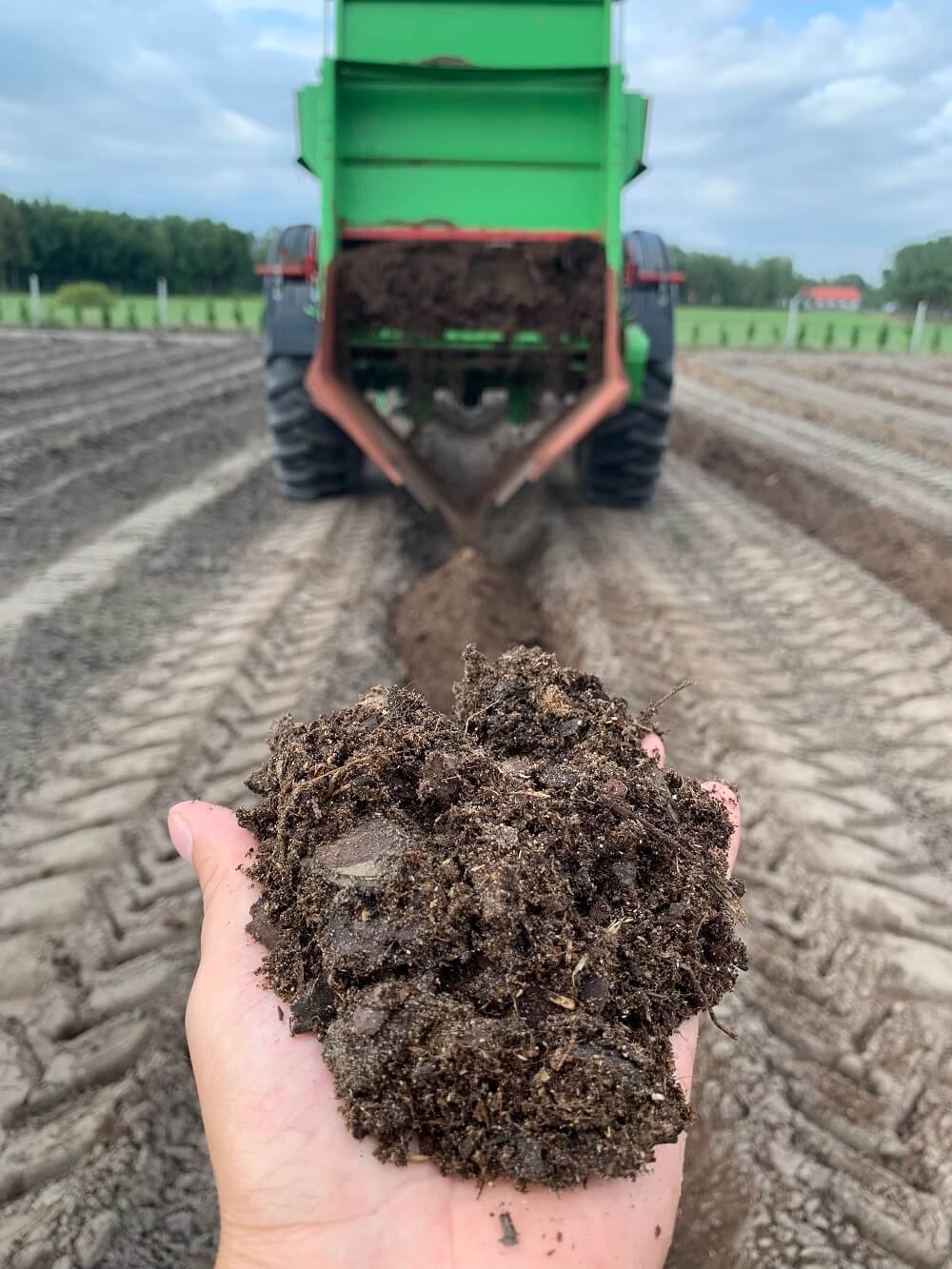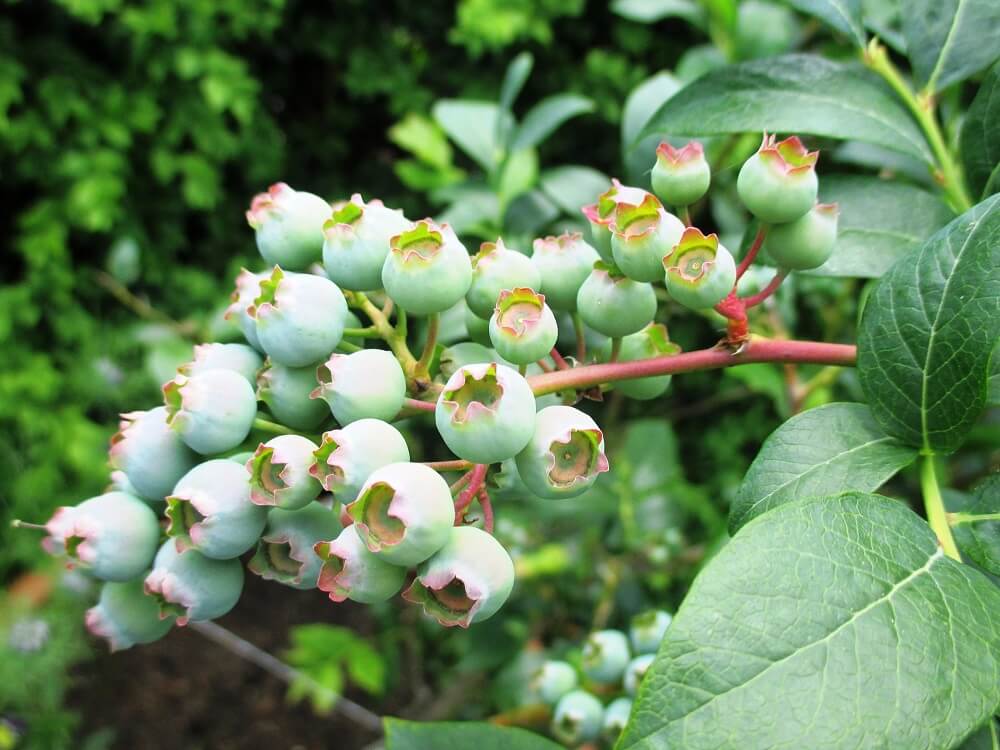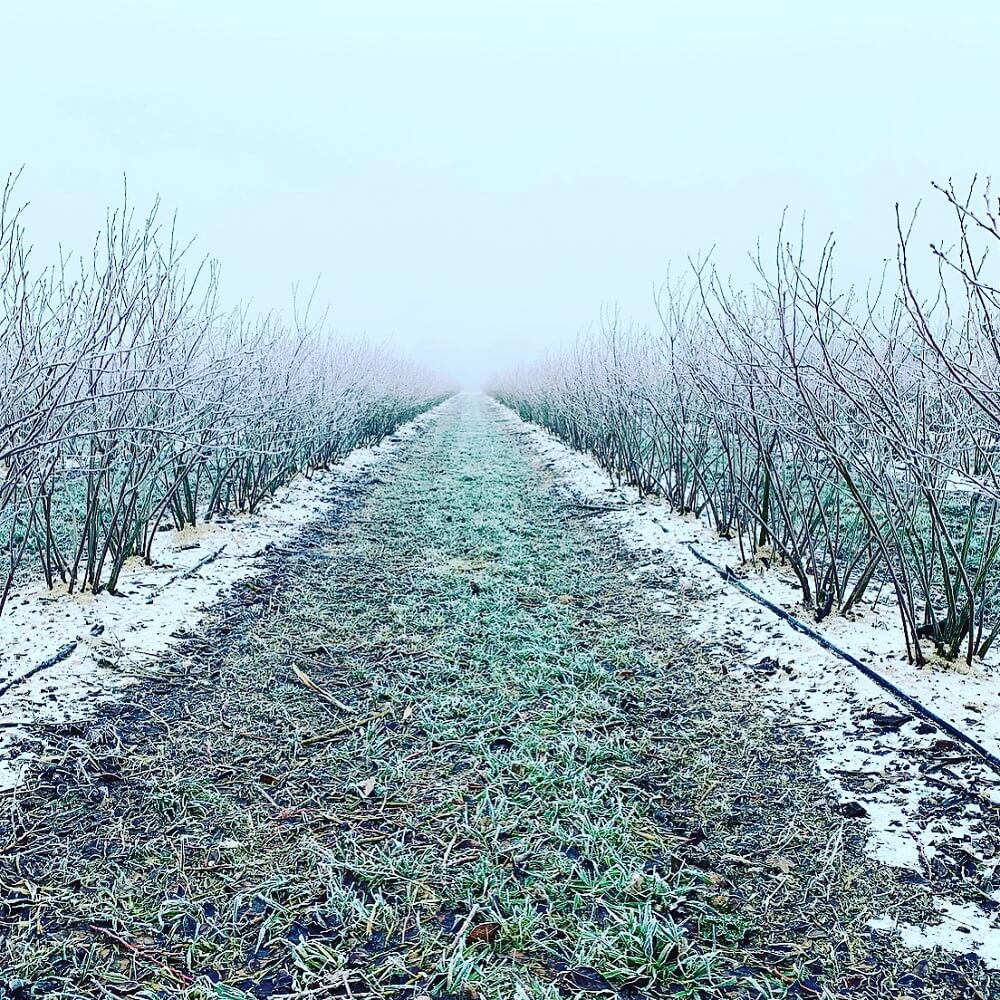We are able to produce seedlings at the stage of vegetative reproduction which process- thanks to the gardening tunnels we use- is for us- entirely trouble- free. This type of reproduction is normally very time- consuming and labor- intensive but because we are able to extract the growth starting early spring, and for quite a long time, we are able to control the rooting.
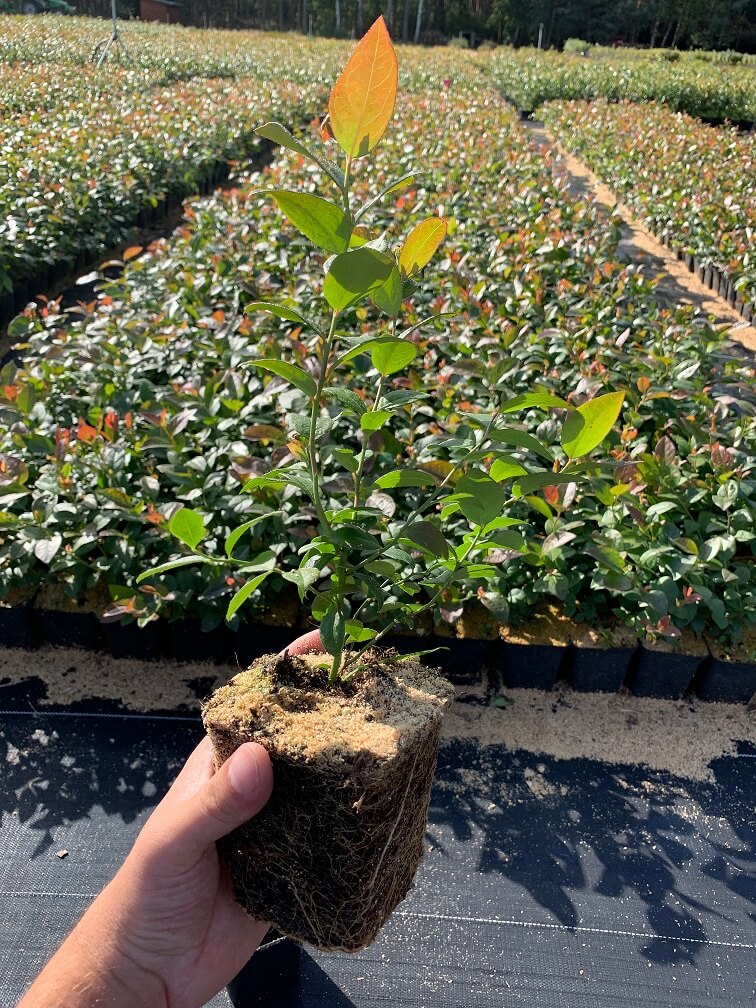
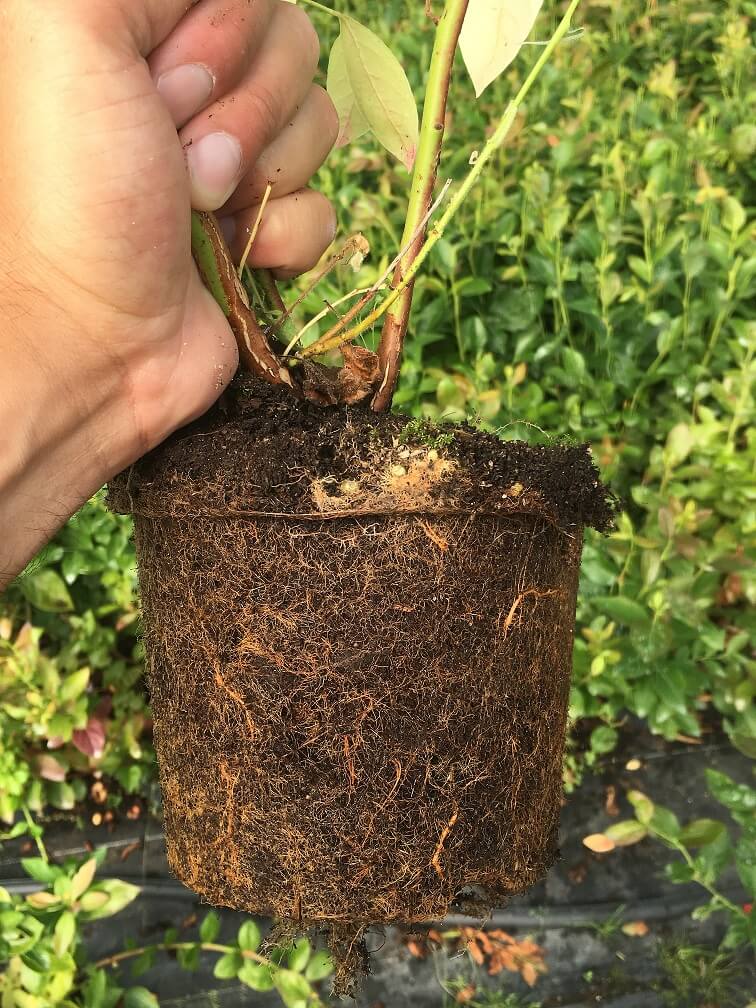
The material that we offer to our clients are: annual seedlings in P9 containers, biennials in 1,5 L plant pots, and perennials in 3 L plant pots. It is worth noting that the biennial seedlings sell best because of their optimal root system and relatively good branching. In order to have a well formed seedling (which translates into better looking), we clip them. That way, the client receives a plant with stems of just the right length, making further transportation much easier.
The final price depends on the age of each seedling and naturally, on the total amount ordered. Wholesale orders allow us to be more flexible when it comes to pricing per unit. At every stage, you can count on our professional advice. Ask us about the plant variety that is right for you, the cultivation methods and care.
THE NORTH AMERICAN HIGHBUSH BLUEBERRY
| Odmiana | Ripening | Productivity/Harvest | Frost-resistance | Disease-resistance | Variety/type | Fruit |
| Aurora | late | high | very high | high | for desserts | medium size, delicate- tasting |
| Bluecrop | average | very high | very high | high | for processing, for desserts | large, very tasty |
| Bluegold | average | high | high | high | for processing, for desserts | large, slightly, covered with wax, average in taste |
| Bonus | average | very high | very high | high | for desserts | very large, firm, very tasty |
| Chandler | average | high | very high | very high | for desserts | very large, sweet, tasty |
| Draper | average | high | high | high | for desserts | large, fragile, sweet |
| Duke | early | high | rather high | rather high | for desserts | medium size, sweet, wine- like, very tasty |
| Earliblue | very early | high | very high | very high | for processing, for desserts | medium size, damage- resistant, exceptionally tasty |
| Elliot | late | very high | high | high | for desserts | relatively large, whitish flesh, sweet, wine- like, tasty |
| Hannah’s choice | early | very high | very high | high | for desserts | very large, light blue, firm, exceptionally tasty |
| Legacy | average | very high | high | high | for processing, for desserts | medium and large, light blue, exceptionally tasty |
| Liberty | average | high | high | high | for desserts | large, pleasant looking, aromatic, very tasty |
| Nelson | average | very high | rather high | rather high | for processing, for desserts | relatively large, firm, exceptionally tasty |
1. Aurora
This North American highbush blueberry is legally protected in all countries within the European Union. It is a hybrid of two other blueberry varieties: Brigitta Blue and Elliott and was officially registered in 2004. This plant is self-pollinating, it is good however to plant it alongside a pollinating plant- just to boost the quality and possibly also the size of the berries. A good pollinator in this case would be Chandler. Aurora is very frost- resistant and can withhold from monilinia fungus and anthracnose diseases. Aurora berries are dark blue, firm to the touch, up to 1,5 cm in size- their main characteristic is a minor pedicel scar. The fruit is very delicate, sweet and juicy.The harvest time is mid- August. Because of its late ripening time, it is recommended to wait until September. Long storage type is typical for this berry. The fruit can be eaten fresh or in pastries.
2. Bluecrop
This blueberry variety is a hybrid of other highbush blueberry types: GM-37 and CU-5. This plant is one of the most popular among the North American highbush blueberries and is oftentimes regarded as the basis of any plantation. It is highly frost- resistant; on swamp terrains however, it might be prone to stem diseases and leaf- dropping. The Bluecrop bush features long, strong, straight growing stems. The leaf blades are glossy, plantain- like, and turned slightly upwards. The blooming happens throughout the entire month of May. This blueberry bears fruit as a result of cross pollination. The Bluecrop berries are large, slightly flattened, the taste is distinctive and wine- like. The peel is covered with a wax- like film. The harvest falls from the end of July until the end of August. This blueberry variety is very high yielding: one bush can bear up to 9 kg of fruit. These berries could be picked mechanically but only after the second or third time (the first two or three times need to be hand harvests). The fruit is equally good both for direct consumption and long storage. This variety is perfect for mass cultivation.
3. Bluegold
The Bluegold variety is a hybrid of Blueheaven, Me. US55, Answorth and Bluecrop; it was created in the year 1976 but started being recommended for mass cultivation only after 1989. This blueberry is highly frost- resistant. The density of the Bluegold shrub is medium and it tends to spread as it grows and with time. The leaves are vividly green, slightly fuzzy on the inside, elongated in shape and matte. This variety blooms in May, the flowers are small but abundant. This plant is cross – pollinating. The berries of the Bluegold variety are visibly flattened around the pedicel but elongated towards the calyx; the entire surface is slightly ribbed and covered with an intensive, blue wax- like film. The flesh is greenish and of light density, the aroma- delicate, the taste- slightly sour. The harvesting time falls at the beginning of August, the yielding is incredibly high. Thanks to that aforementioned intensive, wax- like film, these berries can withhold a long storage period.
4. Bonus
This high bush blueberry is incredibly popular and its fruit- very tasty. It is highly frost- and fungus- resistant. Bonus is easy to cultivate and has a pleasant looking shape which why it has been one of the bestselling varieties. The shrub is branchy but does not exceed 125 cm, while the height is approximately 150 cm. The leaves are large, flat and characteristically vivid green. The Bonus berries are pretty much the biggest; they are round, firm to the touch and very tasty. The color is deep blue and intensive even after the fruit has been picked. The taste is sweet and very pleasant- these are its main attributes. The pedicel scar is minor and dry. The harvesting time falls between the end of July and mid- August. Unfortunately because the fruit ripens unevenly, hand picking is the recommended method. These berries are just as good eaten fresh as they are processed or frozen. An exceptional durability of the fruit allows for an easy transport and long storage time.
5. Chandler
Chandler is a relatively new variety of the North American blueberry but is already known as very pleasant to cultivate. Currently, Chandler is almost as popular as Bluecrop- which has been the go- to standard for years. Chandler was first introduced in 1995; it is highly frost- and fungus- resistant and rather lenient in its soil requirements. The shrub is branchy and can grow up to 150 cm. The leaves are quite large, plantain- like in shape, of an intensive, dark-green color, glossy and very nice looking. The plant blooms throughout the entire month of May; the ideal pollinators would be either Bluecrop or Bluegold. The berries are exceptionally large- can grow up to 2,5 cm in size, are light blue, firm to the touch and very tasty. The peel is covered with a slight wax- like film. The harvest time is long: from the end of July until the beginning of September. Due to the irregular fruiting, hand picking is recommended. The fruit is ideal for direct consumption and pastry production- thanks to the sweet, pleasant taste. Unfortunately, Chandler berries cannot handle prolonged storage.
6. Draper
This variety of the North American highbush blueberry is a Duke hybrid. Draper is legally protected within the entire European Union, just like Aurora. This blueberry variety is highly frost- resistant but does need protection from the monilinia fungus. Draper is one of those rare, self- pollinating varieties but if you would like to boost the fruit quality or the size, it is good to plant it alongside other types- to enable cross- pollination. Draper shrubs grow straight and strong, with numerous branched out stems. The fruit is medium size, slightly flattened, with a dry pedicel scar. The berries are purple- blue and are very tasty. Unlike other blueberries, the size of Draper berries is very even. The harvesting time starts mid- July and lasts until mid- August. Due to the short or even ripening period, Draper is perfect for machine picking. The fruit is equally great for direct consumption, frozen, or for preserves and pastries.
7. Duke
This highbush blueberry is a hybrid of G 100 and 192-8, Ivanhoe, Earliblue as well as E 30 i E 11. It is highly frost- resistant. Its shape is round and can grow up to 180 cm which qualifies as large. The leaves are medium size and grow densely. Duke blooms for the first three weeks of May; the harvesting time falls between the second and last week of July. The berries are exceptionally tasty, their size- medium and even, the color- dark blue, the peel is covered with a wax- like film. The berries are slightly flattened around the pedicle and grow in loose bunches. The flesh is greenish, dense and wine- like, sweet tasting. The Duke variety is perfect for transportation and prolonged storage time. It can be picked mechanically, is recommended for direct consumption but also for all sorts of preserves and easy freezing. It tastes best when chilled.
8. Earliblue
This North American highbush blueberry is a hybrid of Stanley and Weymouth. It was registered in 1936 but started being recommended for cultivation only after the year 1952. Earliblue is highly frost- resistant and can withhold many fungus- based diseases. The shrub of Earliblue has strong, upward- growing stems. The stems are annual and reddish- brown in color. The leaves are elongated, medium size, light- green on the inside, with edges slightly curled upward- which is typical for the variety. Earliblue blooms very early: starting mid- April. The harvesting time is during the first two weeks of July. The fruit ripens evenly and the process itself is quite fast which is why Earliblue is perfect for machine picking. The berries grow clustered in loose bunches, are rather large, slightly flattened and light- blue in color. The pedicel scar is present and dry. The berries are exceptionally crack- resistant and firm. They can be described as: aromatic, sweet and sour, very tasty. Earliblue is great for direct consumption and for all sorts of preserves.
9. Elliot
Elliot is recommended mainly for mass cultivation; fruiting comes late. This variety was introduced to the market in 1973 but was registered much earlier-already in 1947. Unlike other blueberries, Elliot is not very frost- resistant. The shrub can grow up to 200 cm and needs regular trimming, for even fruiting stages. The leaves are small, elliptic, vividly green and matte. Elliot blooms starting the second week of May for three consecutive weeks and has tiny, barrel- shaped, pale flowers. The berries are relatively large, covered with an intensively grey film; the flesh is white and dense, the taste sweet and wine-like, very delectable. The harvesting time falls between the last week of August and the third week of September. The berries ripen evenly which is why machine picking is sufficient. The fruit can be stored at the right temperature for long periods of time. Elliot is excellent for both direct consumption as well as in pastries; it freezes well.
10. Hannah’s choice
This variety of the North American highbush blueberry was created in the United States. It has an attractive looking shape and can be cultivated also as a decorative plant. This is one of the most frost- resistant varieties. The shrub can grow up to 150 cm and features strong, upward- facing stems. The leaves are very interesting looking: featuring orange, Autumn- like shades. The berries are light blue, covered with blue, wax- like film, firm to the touch, rather large in size, attractive looking and great tasting. This is a variety that bears fruit that is exceptionally sweet and full of aroma. The harvesting time falls during the second and third week of July, and thanks to even fruiting- hand picking is not required. Hannahʼs Choice is very high- yielding: one bush can bear up to 6,5 kg of fruit. This variety is mainly recommended for direct consumption but can also be used in pastries, for preserves and as frozen fruit. It can be stored for prolonged periods of time and not lose its color, quality, taste Anor its overall appeal.
11. Legacy
Legacy is an exceptionally decorative variety of the North American highbush blueberry and can grow up to 200 cm. Its branching is slight, and the overall shape rather loose. In the fall, the leaves turn bright orange and stay that way all the way until winter time. Legacy is very frost- resistant. The berries may vary in size but the fruiting stages are regular which allows for machine picking. They taste delicious and look great, which combined only adds to its overall value. The berries are firm, light blue and covered with light, wax- like film. They can be eaten fresh, frozen or used in pastries and preserves. A minor pedicel scar is present. The harvesting time is throughout the entire month of August and at the beginning of September. The fruiting period of the Legacy berry will be longest when planted alongside good pollinators. This variety is one of the most high- yielding and the long fruiting period adds to the overall value of this plant.
12. Liberty
The Liberty variety is a hybrid of Brigitta Blue and Elliott and just like Aurora, it is legally protected within the European Union. Liberty was legally registered in 2004. It is highly frost- resistant. The shrubs require much care and attention during trimming and clipping, since they tend to branch out inwards. The shrub can grow up to 150 cm and the stems are incredibly strong and resilient. Liberty is one of those rare varieties that are actually self- pollinating. However, planting Liberty alongside other varieties will significantly boost the quality and size of its berries. The final product is rather large, purple blue berries, with a slightly flattened shape. A pedicel scar is present and very dry. Liberty berries start to ripen mid- August and do so until the beginning of September- so about two weeks ahead of Aurora( which came from crossing the same main varieties). The berries are firm, have a beautiful color and taste simply great-which is why they are mainly recommended to be eaten fresh. But they can of course be used in pastries and all sorts of preserves. Liberty berries can be machine picked and stored for long periods of time.
13. Nelson
Nelson is a hybrid of Bluecrop and Berkeley and was first registered in the year 1989. It is highly frost- resistant and works just great in the Polish climate- or any northern climate in general. The shrub can grow up to 180 cm and is shaped loosely. The leaves are large, elongated and vividly green in color. Especially its young leaves are a tell tale: their color is pink. Nelson berries are large, round, slightly flat, of a light blue color, covered with a wax- like film. The flesh is greenish, dense, sweet, almost wine- like, very aromatic, very tasty. The harvesting time falls in August and because Nelson berries ripen evenly, machine picking is sufficient. The berries remaining on shrubs will not drop and fall to the ground- which is especially convenient. Nelson berries are best eaten fresh but can naturally also be used in pastries and preserves.
Morphology of the north american blueberry
The North American highbush blueberry is a shrub and a member of the heather family. It can grow up to 200 cm. This plant is very frost- resistant and can withhold temperatures as low as – 20 C or even – 37 C. Certain varieties might be prone to diseases, if grown in wrong environment. Most of the time however, the North American blueberry is a pretty resilient plant that does not give in to diseases easily.
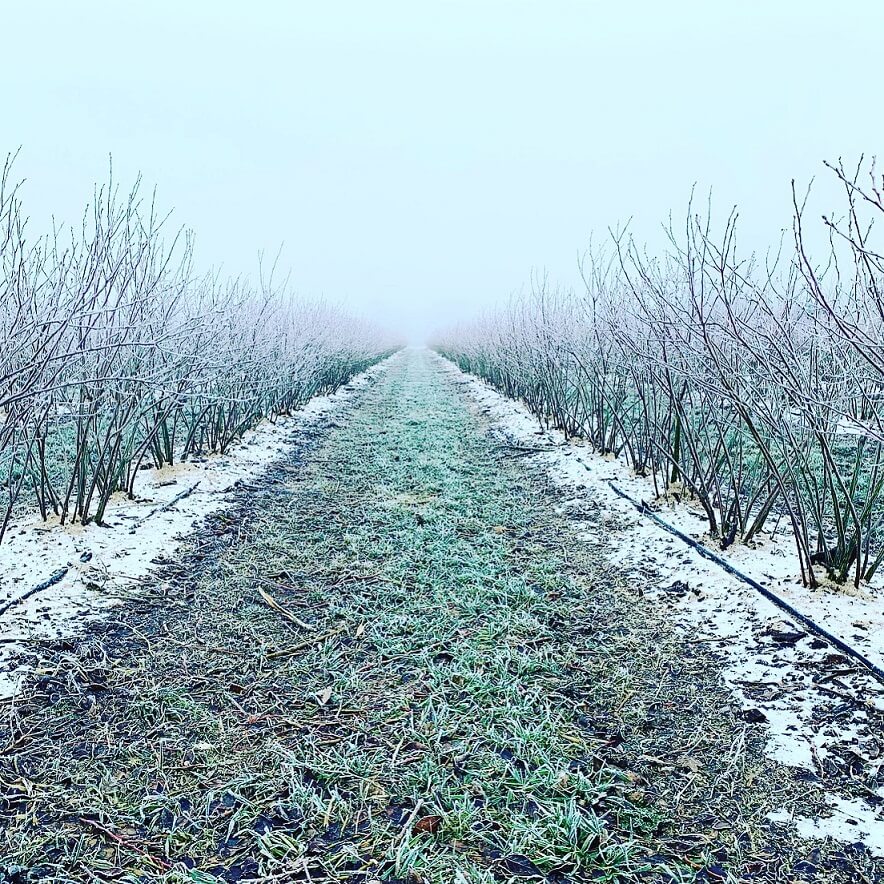
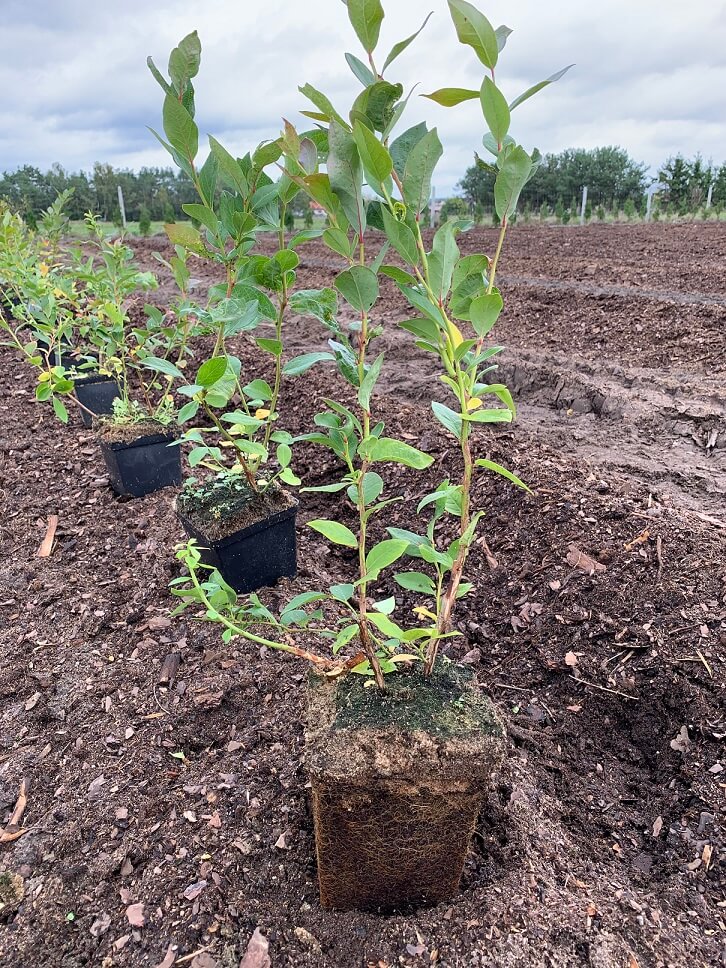
The stems are branched out and create a loose but well proportioned shape. Both the long and short offshoots grow flower pods. The leaves are elongated, almost egg- shaped, the surface is leather- like, the colors range anywhere from dark green to bright, vivid green. The surface of the leaves can be either glossy or matte- depending on the plant variety.
The flowers of the North American berry grow clustered in bunches, are bell-shaped, white or pale pink; they bloom starting at the beginning of April for four to six weeks and are pollinated by bees and bumblebees.
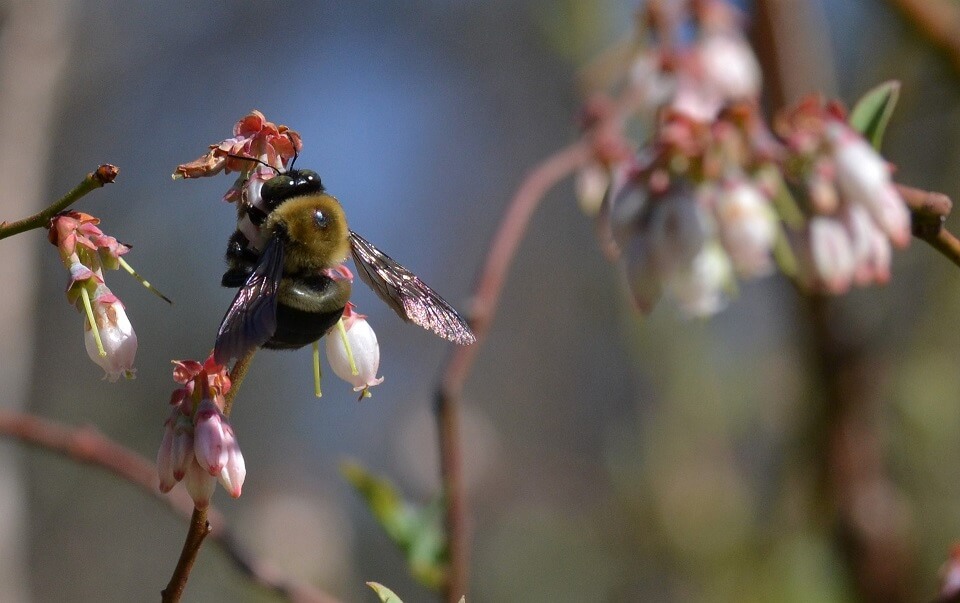
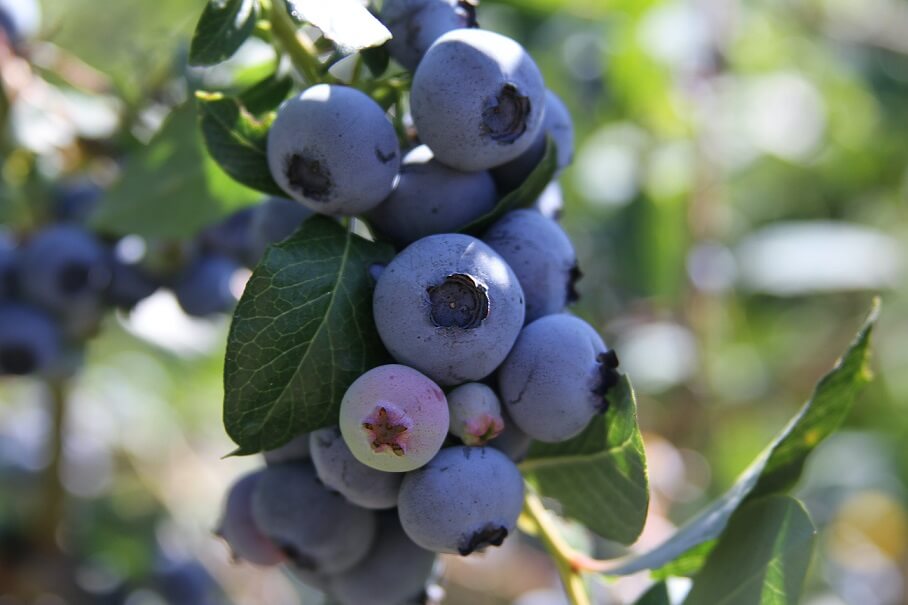
The berries are rather large, round, might be slightly flattened, range in color anywhere from purple to light blue, the wax- like film can be thin or thicker but is always present. The intensity of the aroma depends on the variety, the flesh is green, its juice does not tint the skin. What is typical for the highbush blueberry is the significant amount of side roots, which function is that of an absorbant hair, a root hair- which in case of heather- like plants is rather unusual.
